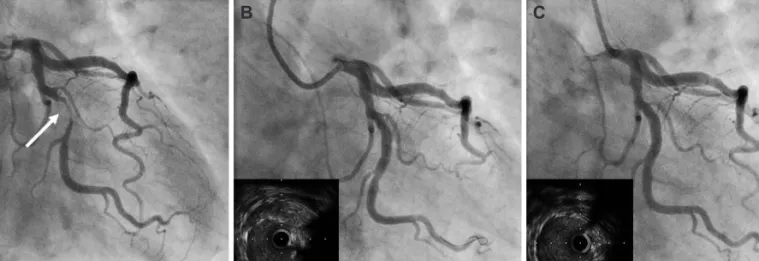352 Copyright © 2012 The Korean Society of Cardiology Korean Circulation Journal
Introduction
Coronary artery perforation (CP) during percutaneous coronary intervention (PCI) is a rare complication. The reported incidence of CPs ranges from 0.1% to 0.6%.
1-7)Most CPs occur during the proce- dure, immediately after stenting or adjunctive ballooning. However, it is also well recognized that the hydrophilic wires and glycopro- tein IIb/IIIa antagonist during PCI increases the risk of delayed CP.
2)However, those CP seemed to be minor and do not require pericar- dial drainage. However, we herein describe an unusual delayed CP (type III) at the site of stent implantation after PCI without any evid- ence of immediate perforations. To the best of our knowledge, this is the first case report of angiographic documentation and treat- ment of delayed CP at the site of stent, presented as cardiac arrest.
Case Report
http://dx.doi.org/10.4070/kcj.2012.42.5.352 Print ISSN 1738-5520 • On-line ISSN 1738-5555
Fatal Delayed Coronary Artery Perforation After Coronary Stent Implantation
Sang-Hoon Kim, MD, Jae-Youn Moon, MD, Jung-Hoon Sung, MD, In Jai Kim, MD, Sang-Wook Lim, MD, Dong-Hun Cha, MD, and Seung-Yun Cho, MD
Department of Cardiology, CHA Bundang Medical Center, CHA University, Seongnam, Korea
